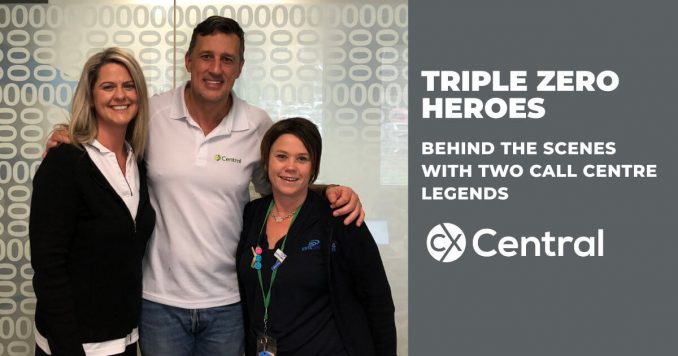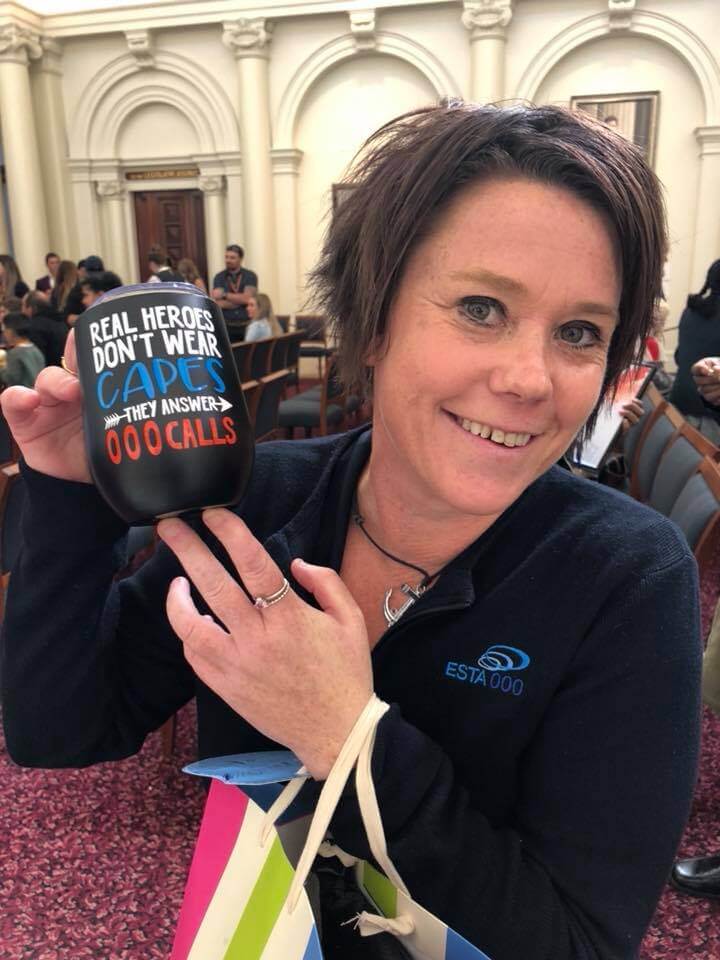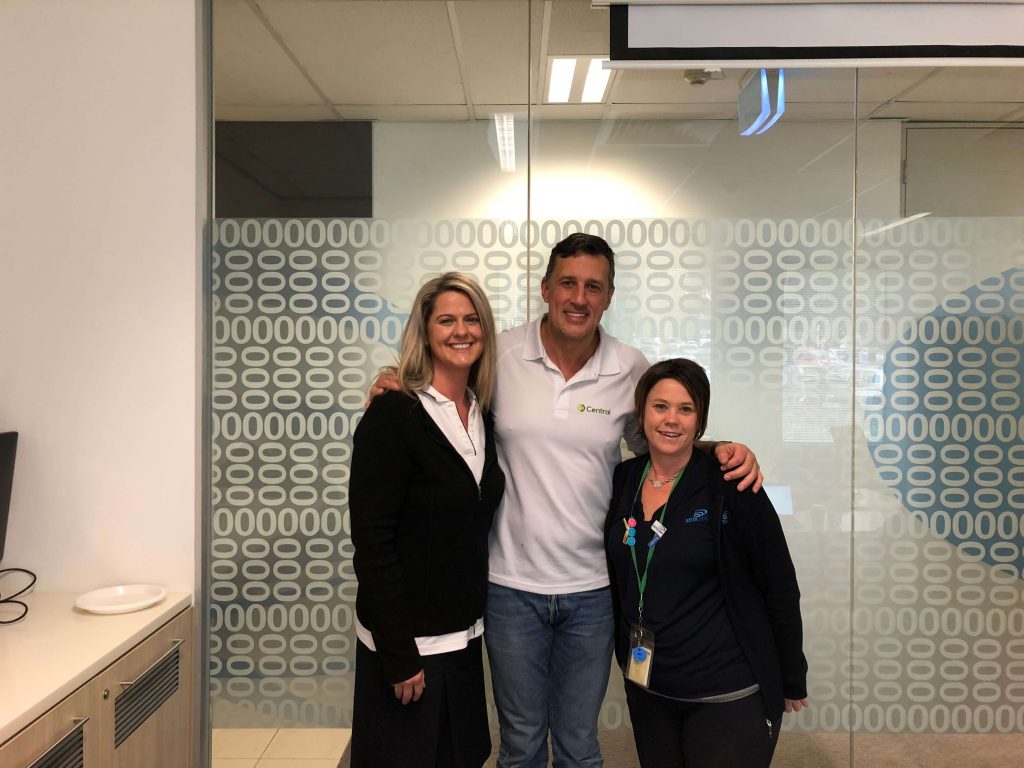
Meet our Triple Zero Heroes
Heart pounding you quickly grab the phone and dial triple zero.
Scared, physically trembling and overwhelmed with a flood of emotions, you’re desperate for help.
Every day, over 7,000 Victorians have to make that phone call to Triple Zero.
It might be a car accident, a medical emergency, a fire, an assault, a tree through your roof, robbery, murder or suicide.
Regardless, there are over 1,100 scenarios the Triple Zero team are instantly prepared for and their reassuring, calming voice, instructions, scene safety advice and first aid care is amongst the best in the world.
So who are the amazing people on the other end of the Triple Zero calls?
Recently I was fortunate enough to spend some time in the Emergency Services Telecommunications Authority (ESTA) Contact Centre, and along with interviewing Dr Amee Morgans, Executive Director Operations Support on my CX Central Podcast, I also got to spend some time with a couple of the staff, the real-life Triple Zero Heroes!
As many of you know, I’ve been on a crusade for more decades than I care to remember about promoting the diversity of contact centre roles in our community and challenging the perceptions most people have of contact centre work.
Whether it’s our Triple Zero heroes, ordering some food, insurance, banking, telcos, billing enquiries, claims and so on, the one thing they all have in common is they work in a contact centre.
Sure, the types of calls, skills and experience may vary but they come to work every day and sit in front of a computer with a headset on talking to customers so that’s a contact centre for me!
Inside the Triple Zero contact centre
Stripping away the types of calls the Triple Zero contact centre handles, it looks remarkedly like any other contact centre operations albeit with very high service standards, where EVERY call must be answered within 5 seconds.
For those in the contact centre industry many of these elements will be familiar:
- There are multiple skills types which in this case consist of fire, police, SES and ambulance that all have different skill requirements and training. The number of skills an agent is qualified for is also linked to salary.
- There are different ‘job levels’ that are again linked to salaries. The main two types within ESTA are the ‘Call Takers’ who handle calls with the general public and ‘Call Dispatchers’ who are the ones who dispatch the emergency vehicles to the scene. For the record, the Call Dispatchers are the more seni0r roles (who have all worked as a Call Taker in the first instance).
- Resource planning and forecasting are fundamental to ensuring service standards are met and balancing the leave requirements of a 600 plus workforce split over three separate sites in Ballarat, East Burwood and Docklands. A team of 12 staff in their Workforce Management team focus on real-time, next month and three months out planning.
- Staff go through a thorough recruitment process including a video interview, psychometric testing, assessment centres (including some exposure to real pre-recorded calls), panel interviews, reference and pre-employment checks.
- There is a comprehensive induction training program that consists of six weeks classroom training transitioning into a support nursery where they start to take live calls with high levels of support (1:1 or 1:2 ratio of a trainee to Team Leader) until they are deemed ready to move out onto the operational floor.
- Once on the job, employees receive ongoing training and have regular feedback on performance (there is a minimum 90% quality score target).
- Staff have access to a Knowledge Management System (KMS) that provides instructions on how to handle the various call types for each service and this is used in real-time to guide the staff on the questions to ask and actions to take.
- The centres are equipped with lunch facilities, relaxation rooms and even ‘dark’ rooms where there is no light and relaxing massage chairs for staff to grab some rest.
- Staff log in and out of the queues for breaks, training etc and real-time call traffic, resource availability etc is displayed on monitors around the centre.
- Every single call and interaction is recorded.
- There is a 24/7 Employee Assistance program, a Peer to Peer support program and the call takers are supported by their fellow employees and Team Leaders, many who have completed Mental Health First Aid Training.
Meet Narelle, a Call Taker
Narelle has worked at ESTA for over 16 years and is a rare breed.
Whilst most people are trained to handle one type of emergency call (e.g. police or ambulance), Narelle is skilled to handle two skills, which only around 18% of the 305 call takers are trained to do.
It’s not that each of the different skills are more difficult than the other, they are just very different.
With Ambulance calls, for example, the calls are very structured to enable the ESTA staff to determine the seriousness of the situation and allocate the appropriate resources.
Police, of course, can very evidentiary in nature, and the advice given over the phone can often be the difference between a successful prosecution or the offenders walking away free.
The ESTA partners (like the Police, Fire or Ambos) are the ones that actually set the guidelines and processes for the call takers to follow.
The ESTA Knowledge Management System will typically guide a call taker through each scenario in a step by step process that has been designed by the relevant business partner (e.g. Victoria Police) including what questions to ask, when to dispatch resources and at what priority.
Are they breathing? Is the person conscious etc are questions you may hear on an ambulance call whilst on a police call it might be things like is the area secure? Describe what the person looks like etc.
The possible consequences of how well triple zero calls are managed are extremely serious, so how does Narelle deal with the pressure and stress with the role? “Solid training, learning to remove yourself emotionally from the situation and relying on the support of your colleagues” are just a few of the examples said Narelle.

Whilst some of the calls can no doubt be difficult, at the very core of the job it’s about helping people and it’s something Narelle finds incredibly rewarding.
In fact, Narelle credits one of her career highlights getting the opportunity to meet a 5-year-old child who she coached over the phone (to give CPR to her mum) and the mum herself, who thankfully survived.
The child was awarded a Triple Zero Hero award and if you want to hear some of those amazing calls for yourself, visit the website and listen to some calls from last year and have some tissues close by. And for the record, to this day, Narelle is still friends with the mum!
They don’t always know the outcome of every call though. More often than not, they support the caller up until the point the emergency service arrives. From there it’s onto the next call.
Delivering babies, providing CPR instructions, treating a snake bite, as well as suicides, fatalities etc. are just a snapshot of the diversity of the different calls each agent can take in a single shift.
It’s certainly not a job that everyone is cut out to do, and some of the stories about some calls that have really stood out for Narelle over the years were tough, to say the least.
Whilst the training you receive helps you remove the emotional connection to focus on the job at hand, you’re only human and every now and then, one of the calls can really affect you.
I won’t go into the details in this forum but calls involving children, suicides etc would be tough on anyone to hear. “I really love the team I work with, we all look out for each other and there is a lot of support and empathy when you do end up with a tough call”.
That sense of ‘family’ was very evident during my visit and not unlike other contact centres, “working with my colleagues” is often cited as the best part of the job.
Asides from the support from colleagues, the entire contact centre environment itself is designed to provide and promote a supportive environment.
From working 90 minutes on, 30 minutes off over 12-hour shifts, break out rooms, relaxation rooms etc as well as the opportunity to go for a walk, do a work out etc there is a lot invested in employee welfare off the phone, as much as on it.
Meet Cheree, a Call Dispatcher
Whilst the call takers handle calls from the general public (and will normally stay on the call until help arrives) it’s the dispatchers who are responsible for allocating the resources to the emergency with specialists despatchers across fire, police and ambulance.
Cheree has worked for ESTA for 21 years having first seen the job advertised in The Age (this was before SEEK!).
According to Cheree, the recruitment process and training has certainly changed a lot since those days (for the better!) and Cheree is now a dispatcher for the fire services.
Despite the pressure of prioritising often scarce resources, there was no question Cheree loves her job.
“To me, it’s like a voluntary job where I get to help people all day, and still get paid for it!”. Whilst technology has made the job easier over the years, one of the things Cheree loves about her job is that she is constantly learning and that “it really does involve a team to make things work”.
When asked about some of the tougher moments of the job, Black Saturday was certainly top of mind.
For those unaware, Black Saturday was a series of bushfires that ignited or were burning on 7 February 2009 when Melbourne hit a temperature of 46.4 °C and it was Australia’s all-time worst bushfire with 180 people losing their lives and over 400 seriously injured.
The fire was so intense that there were literally locations where no emergency vehicles could be dispatched.
Some of the details are far too graphic to describe here but imagine a scenario where you are talking on the phone to people who were literally surrounded by fire and there was no way out, and there was no help coming…
Putting yourself in that situation, you quickly realise just how amazing our Triple Zero Heroes really are.

Is a career at ESTA for you?
Speaking to both ladies, it was clear that they both have a genuine passion and pride in their jobs and the role they play in supporting the Victorian community.
Like other contact centre jobs though, it’s not a career for everybody and of course, given the call types, there is an extra layer of special qualities required.
The key skills ESTA look for are:
- Communication
- Resilience
- Listening
- Attention to detail
- Not to take it personal
- Empathy
- Assertiveness
- Never assume
- Don’t be judgemental
You can learn more about the career options on the ESTA website along with any current vacancies.
Tips to save a life
Perhaps just symbolising their inherent caring nature, when I asked both ladies if there was a message we could get to the public that would help make the life of a Triple Zero operator a bit easier, their first thoughts were not about themselves, but rather how they can help the community.
One surprising fact to me was that the Triple Zero team do not automatically know your location.
Despite my iPhone seemingly being able to track my entire movements down to the nearest centimetre, the ESTA technology suite does not currently provide location information so the number one tip when calling Triple Zero is know your location. ”
Just 200m up the road from Coles doesn’t cut it so be specific.
This can save a lot of time in getting the right support dispatched to you ASAP and could literally be the difference between life and death.
There is also a community campaign underway to try and make sure you only call Triple Zero for real emergencies where you need help from police, fire, SES or ambulance.
Of course, what constitutes an emergency can differ for different people, but calling for advice on the best medicine for a cold, for example, is using up precious capacity for serious emergencies.
Listen to the Podcast
You can learn more about the ESTA contact centre in my CX Central Podcast with Dr Amee Morgans, Executive Director Operations Support where we cover a range of topics including:
- Overview of ESTA
- Data trends and forecasting (15-minute intervals with 4% accuracy!)
- What impacts call volumes (e.g. weather but there is also one big surprise)
- Challenges or resource management (e.g. police units, ambulances etc)
- Staffing challenges and how to handle call spikes
- Recruitment
- Induction Training
- A real live call
You can listen to the Podcast directly below, or download it and listen at a more convenient time.
The final word
Never has it been more evident to me that I’m a contact centre guy and not a journalist.
I was completely blown away by everything at ESTA and despite my best efforts, I really don’t feel like I’ve conveyed how truly amazing everyone who is part of the ESTA family are and how lucky we all are to have that level of support and professionalism just a call away if we ever need it.
You guys rock!

